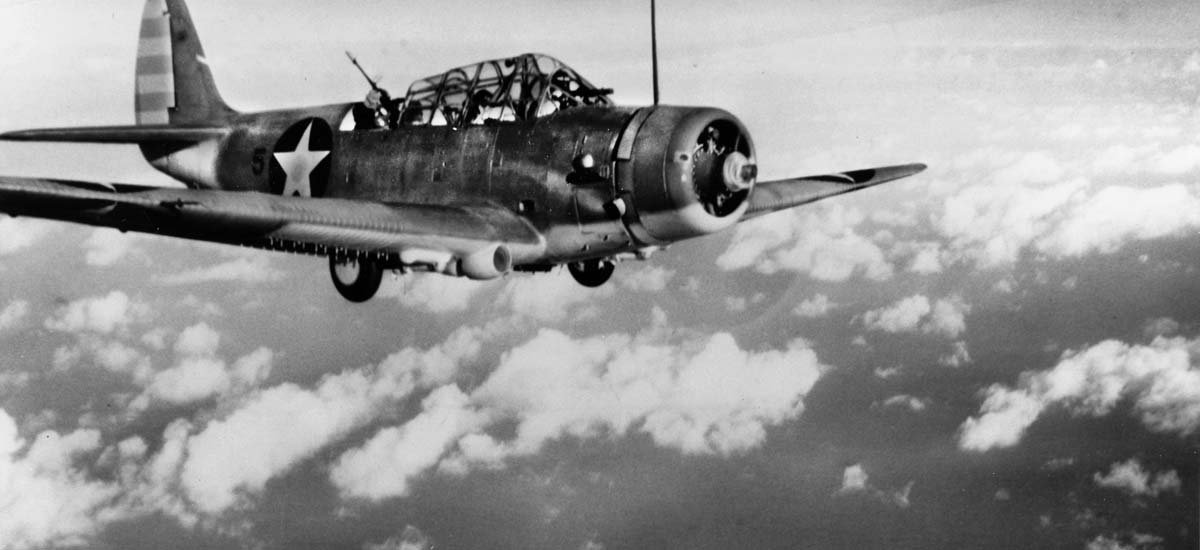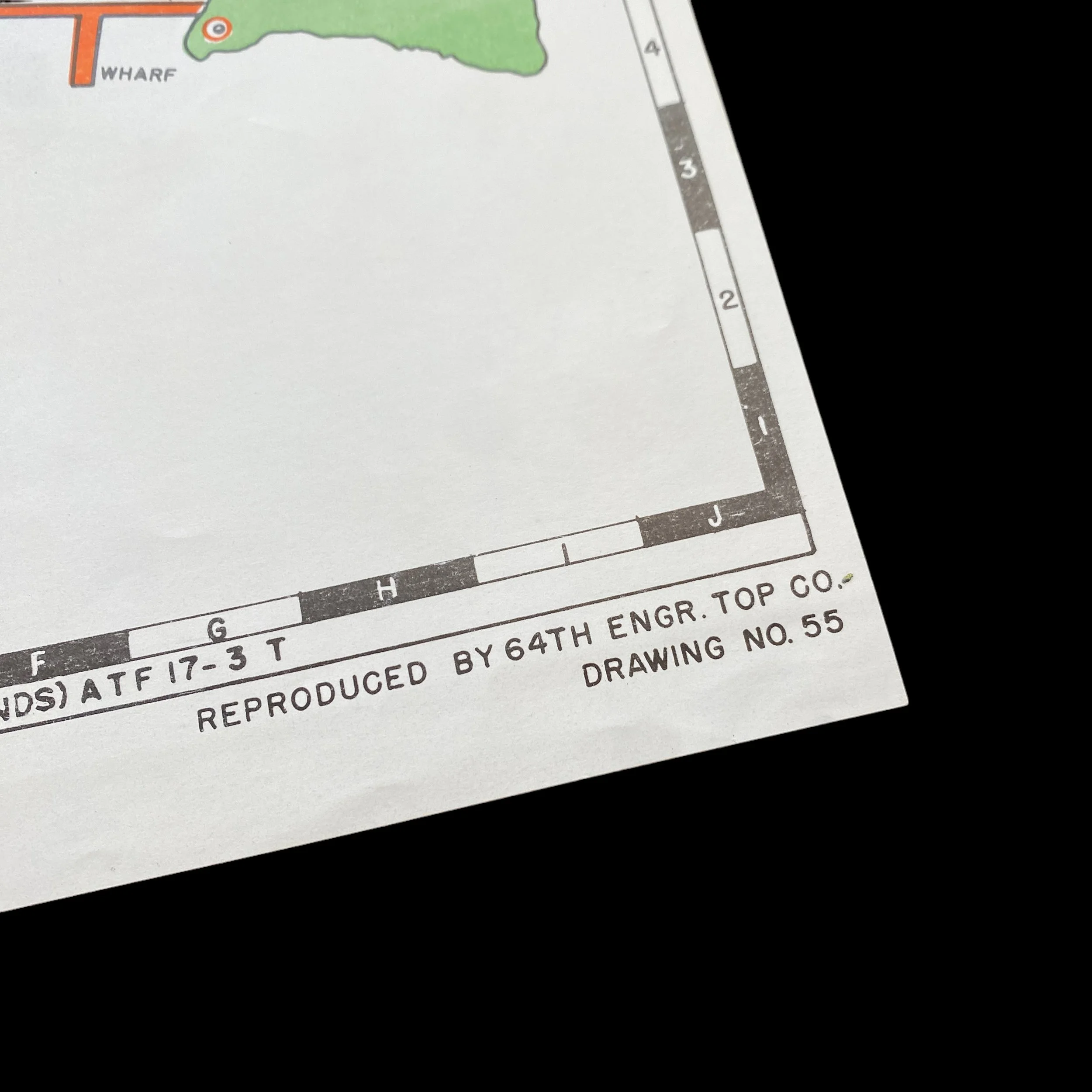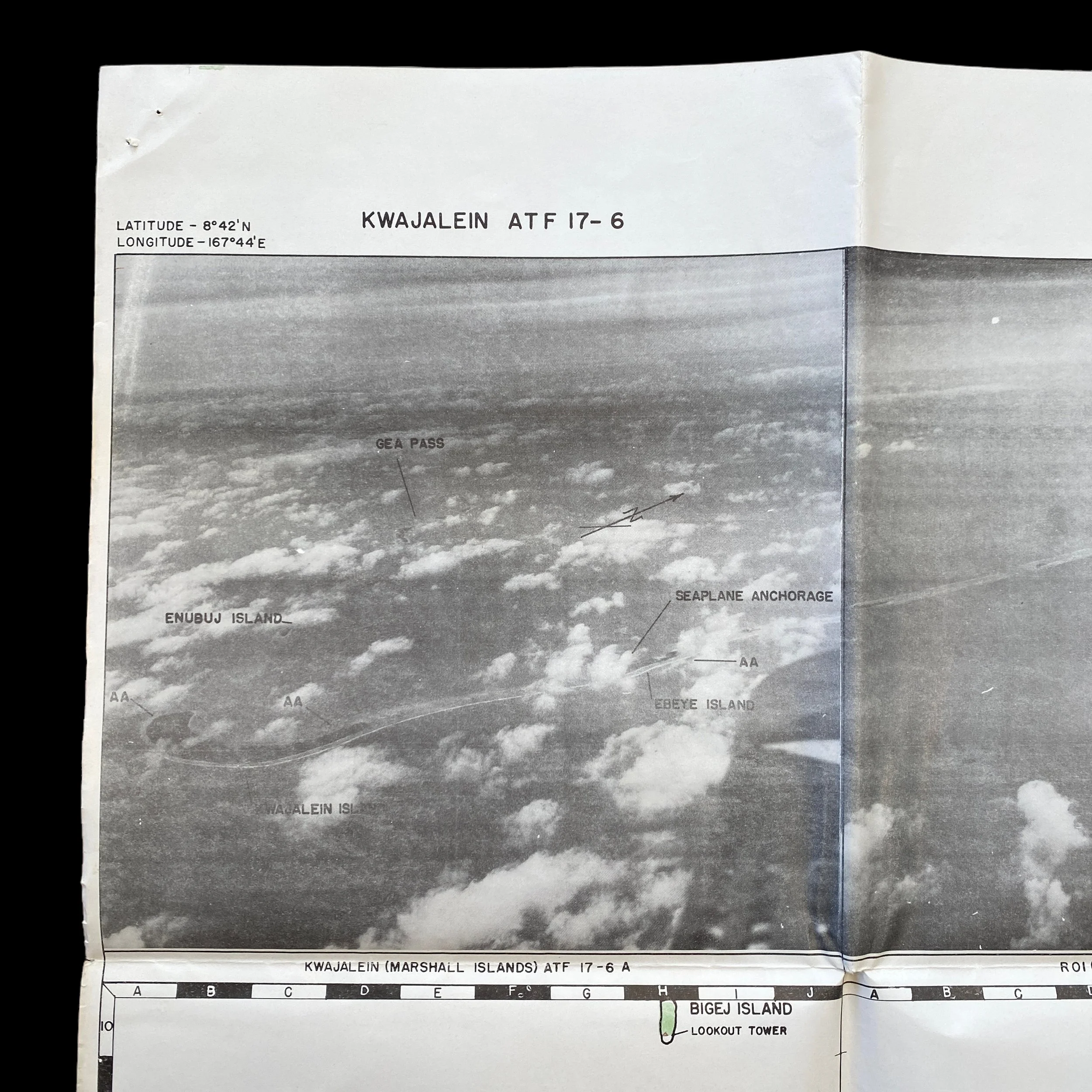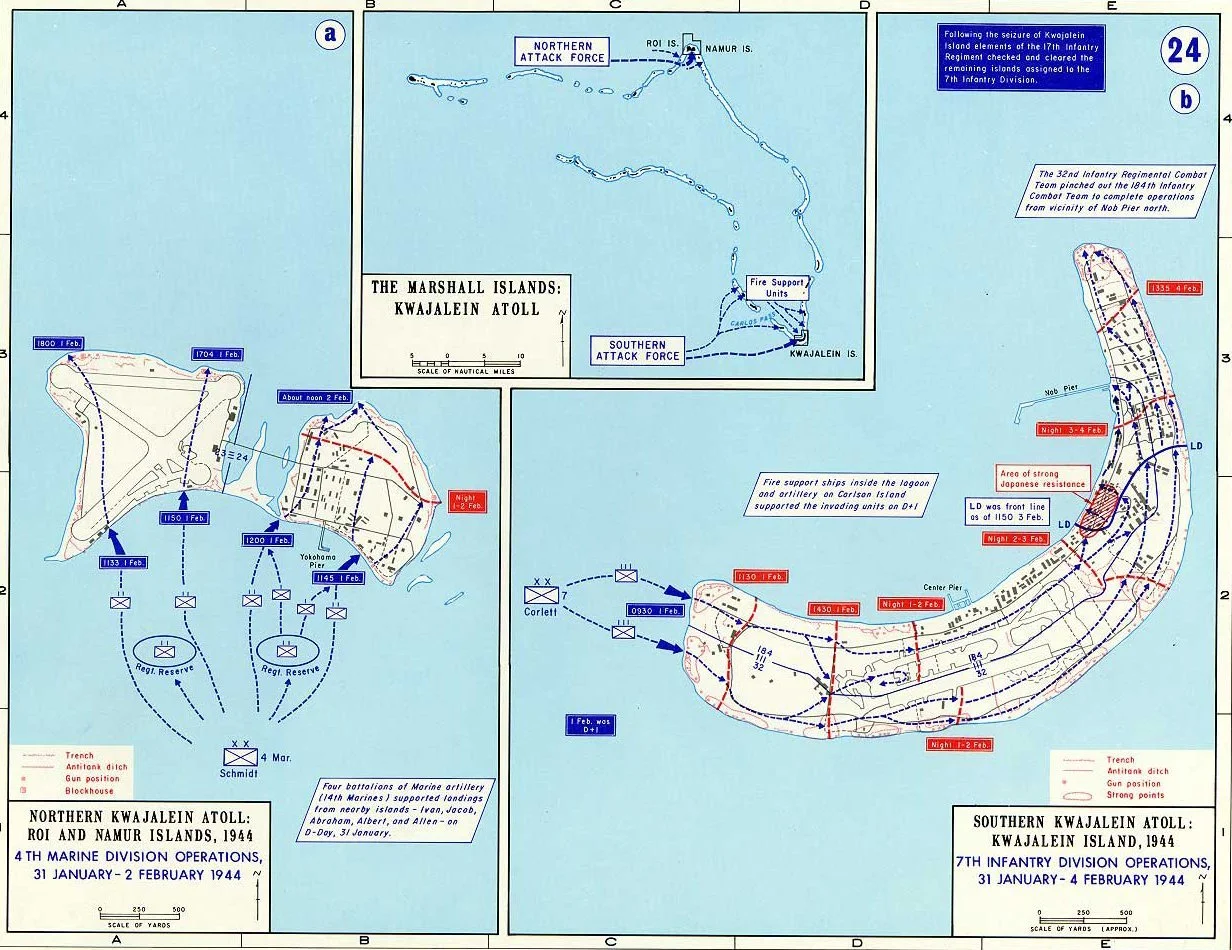VERY RARE! WWII Marshall Islands Campaign 1943 "CONFIDENTIAL" Kwajalein Island Air Target Assault Map























VERY RARE! WWII Marshall Islands Campaign 1943 "CONFIDENTIAL" Kwajalein Island Air Target Assault Map
Comes with a hand-signed C.O.A. and a full historical researches write-up
Behold this extraordinary artefact—an exceptionally scarce and museum-worthy relic. Dated 1943, this remarkable combat air target assault map of Kwajalein Island bears the distinguished stamp of "CONFIDENTIAL." It served as an invaluable tool during the daring U.S. aerial missions conducted on Kwajalein and the adjacent Marshall Islands within the framework of Operation Flintlock during World War II.
What makes this map even rarer is that it details key ANIT-AIRCRAFT positions and other various Japanese emplacements and aircraft runways around the Kwajalein Atoll.
Titled: Kwajalein - ATF- 17-6
Dated: January 1943
The Marshall Campaign planned by the US involved attacks on seven islands, bypassing many more. Operation Flintlock had nine phases, the main phase being the capture of Kwajalein and Majuro Atolls, a second phase, Operation Catchpole, the capture of Eniwetok, and further phases being the capture of the remaining islands. Bombardment by the Seventh Air Force, and a carrier air attack on 4 Dec. 1943, followed by additional attacks in Jan. 1944, destroyed all Japanese aircraft. The 4th Marine Division—under Major General Harry Schmidt—was assigned to Roi-Namur, and the Army's 7th Infantry Division—under Major General Charles H. Corlett—would make the assault on Kwajalein.
The Battle of Kwajalein was fought as part of the Pacific campaign of World War II. It took place from 31 January – 3 February 1944, on Kwajalein Atoll in the Marshall Islands. Employing the hard-learned lessons of the Battle of Tarawa, the United States launched a successful twin assault on the main islands of Kwajalein in the south and Roi-Namur in the north. The Japanese defenders put up stiff resistance, although outnumbered and under-prepared. The determined defense of Roi-Namur left only 51 survivors of an original garrison of 3,500.
For the US, the battle represented both the next step in its island-hopping march to Japan and a significant morale victory because it was the first time the Americans had penetrated the "outer ring" of the Japanese Pacific sphere. For the Japanese, the battle represented the failure of the beach-line defense. Japanese defenses became prepared in depth, and the Battles of Peleliu, Guam, and the Marianas proved far more costly to the US.
What was the strategic importance of Kwajalein Island during World War II:
Kwajalein Island was strategically important during World War II for several reasons
The island was part of the Japanese perimeter of defense, and its facilities were being utilized as outlying bases for their military operations in the Pacific.
The island was located in a strategic position that allowed bombers to attack enemy targets in the Marshall Islands.
The island was home to Bucholz Army Airfield, which was used by the US military as a staging area for future operations after they defeated the Japanese.
The island was one of the largest land masses in the Kwajalein Atoll, which surrounds one of the largest lagoons in the world. The atoll provided a natural barrier that protected the Japanese from naval attacks.
During the Battle of Kwajalein, which occurred from January 31 to February 3, 1944, the US Army used aerial attacks and combat missions to defeat the Japanese forces on Kwajalein Island. The battle was a pivotal victory for the US Army and helped shape history by ending World War II.
Detailed History. on the Assault on Kwajalein Atoll:
During World War II, the United States launched an attack on Kwajalein Atoll, which was later known as the Battle of Kwajalein. The attack was launched on January 31, 1944, and was spearheaded by the 7th Infantry Division, while the 4th Marine Division did the same on other islands. The attack was a pivotal victory for the US Army and was launched using lessons learned during the deadly Battle of Tarawa in November 1943. The US Army used aerial attacks and combat missions to defeat the Japanese forces on Kwajalein Island. The Japanese military leadership referred to the attack on Pearl Harbor as the Hawaii Operation and Operation AI, and as Operation Z during its planning. Japan intended the attack as a preventive action to prevent the United States Pacific Fleet from interfering with its planned military actions in Southeast Asia against overseas territories of the United Kingdom, the Netherlands, and those of the United States. Over the course of seven days, Japan launched an attack on Pearl Harbor that led to its formal entry into World War II on the side of the Allies. The US Army used aerial attacks and combat missions to defeat Japan in several battles during World War II. The US Army used aerial attacks and combat missions to defeat Germany in several battles during World War II. In May 1940, Britain's Royal Air Force (RAF) bombed the Ruhr area of Germany, specifically civilian industrial targets that were known to aid the centers in Germany. In January 1943, in their first attack on German soil, 91 B-17s and B-24s of the 8th Air Force targeted submarine yards in Wilhelmshaven, Germany. The daytime operation was a success as Wilhelmshaven sustained losses to many important industrial plants, and the Germans lost 22 planes to only three USAAF bombers. The USS Lexington (CV-16) is an Essex-class aircraft carrier built during World War II for the United States Navy. During World War II, she sailed to raid Kwajalein on December 4. Her morning strike destroyed the SS Kembu Maru, damaged two cruisers, and accounted for 30 enemy aircraft. Her gunners splashed two of the enemy torpedo planes that attacked at midday but were ordered not to open fire at night as Admiral Charles had ordered a blackout. She supported Army landings at Hollandia (currently known as Jayapura) on April 13 and then raided Truk on April 28. Heavy counterattacks left Lexington untouched, her planes splashing 17 enemy fighters. In conclusion, during World War II, the US Army used aerial attacks and combat missions to defeat Japan in several battles such as Pearl Harbor and Kwajalein Island. The US Army also used aerial attacks and combat missions to defeat Germany in several battles such as Wilhelmshaven. The USS Lexington (CV-16) also played a significant role in defeating Japan during World War II by launching aerial attacks on Kwajalein Island. These battles were pivotal victories for the US Army and helped shape history by ending World War II.